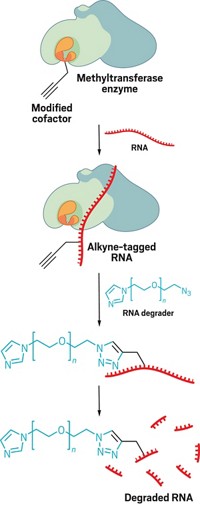Advertisement
Grab your lab coat. Let's get started
Welcome!
Welcome!
Create an account below to get 6 C&EN articles per month, receive newsletters and more - all free.
It seems this is your first time logging in online. Please enter the following information to continue.
As an ACS member you automatically get access to this site. All we need is few more details to create your reading experience.
Not you? Sign in with a different account.
Not you? Sign in with a different account.
ERROR 1
ERROR 1
ERROR 2
ERROR 2
ERROR 2
ERROR 2
ERROR 2
Password and Confirm password must match.
If you have an ACS member number, please enter it here so we can link this account to your membership. (optional)
ERROR 2
ACS values your privacy. By submitting your information, you are gaining access to C&EN and subscribing to our weekly newsletter. We use the information you provide to make your reading experience better, and we will never sell your data to third party members.
Biological Chemistry
Methylation Mimic Silences DNA Targets
July 2, 2007
| A version of this story appeared in
Volume 85, Issue 27

Nature turns off transcription of a gene by adding a methyl group to the gene. A new silencing technique puts that same ability in the hands of scientists. Cells rely on methyltransferases to recognize a specific DNA sequence and then attach a methyl group to one of its bases. Carlos F. Barbas III and Wataru Nomura of Scripps Research Institute have designed a self-assembling, semisynthetic methyltransferase to mimic this behavior at a specific DNA site in bacteria (J. Am. Chem. Soc., DOI: 10.1021/ja0705588). In their system, DNA binding of artificial zinc finger proteins (shown, green) brings together two fragments (orange) of methyltransferase, which then assemble into the active enzyme. The enzyme subsequently transfers a methyl group to a cytosine in the region between the two DNA binding sites. Different zinc finger proteins could be prepared to bind other DNA sequences, potentially making the technique broadly applicable for therapeutic gene silencing.







Join the conversation
Contact the reporter
Submit a Letter to the Editor for publication
Engage with us on Twitter